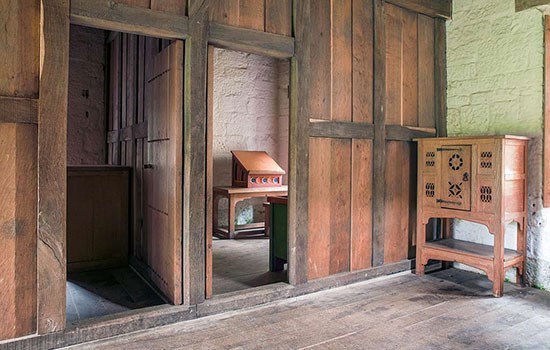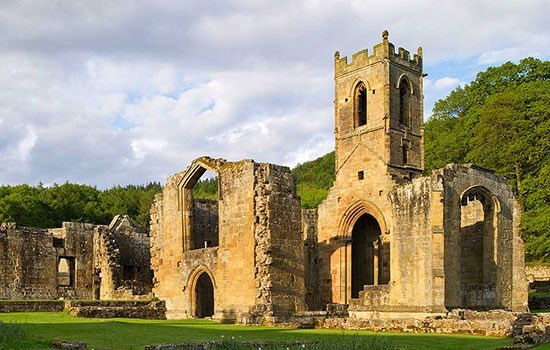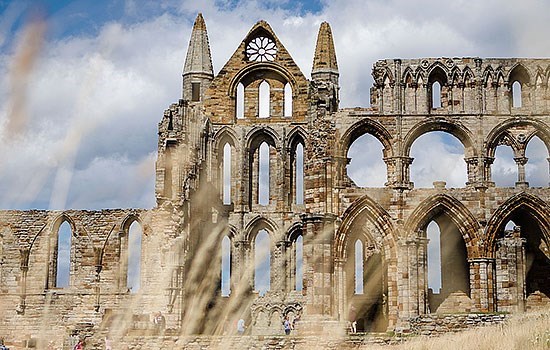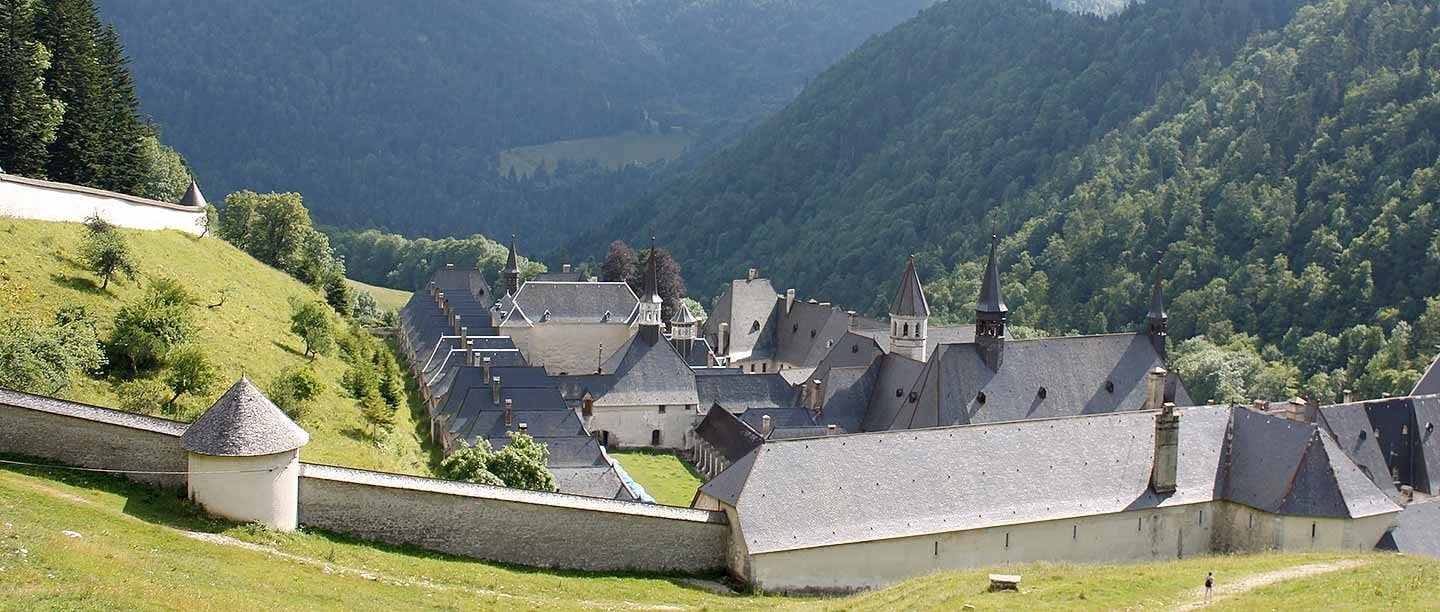Beginnings
The order began when Bruno Hartenfaust, a canon and later chancellor of Reims in northern France, rejected what he saw as a corrupt and degenerate Church.
With six companions, Bruno decided to follow the example of the first hermits in the Egyptian desert, rather than live as monks in a Benedictine monastery. With the help of Bishop Hugh of Grenoble, they settled in 1084 at the Grande Chartreuse, in a rocky, desolate area of his diocese.
Here they lived as hermits in such austerity that by the early 12th century the monks of this new community had become known as Christ’s Poor Men. Early accounts of life there tell of stark buildings bereft of paintings, tapestries or other decorations. They describe monks clad in hair shirts and white habits living a silent, meditative life, spending most of the day alone in their cells.
Bruno had not intended to found a new monastic order. But the numbers drawn to his community increased, and by 1117 it had become essential to formalise the customs of the Grande Chartreuse and the eight other communities that by then were following its practices. The Customs, which were formally ratified by the Pope in 1133, made the prior of the Grande Chartreuse the central authority of a new order. An annual general chapter meeting would ensure that the statutes were being followed correctly and amend them if necessary.
Arrival in England
It was King Henry II who first brought Carthusians from the Grande Chartreuse to England, as part of his penance for the murder of Archbishop Thomas Becket in 1170. They settled at Witham in Somerset, then a suitably inhospitable and remote spot, in 1178.
Initially, the Witham Carthusians soon lapsed into communal monastic life, but when their third prior, Hugh of Avalon (later Bishop of Lincoln), took charge in 1180, he rescued Witham from collapse and restored its reputation. In 1222 Henry II’s illegitimate son William Longespée founded the second charterhouse in England, at Hatherop in Gloucestershire (later moved to Hinton, near Bath).
But the ascetic life of the Carthusians did not have the wider popular appeal of other reforming monastic orders like the Cistercians, and for more than 150 years these sites remained the only two charterhouses in England.
Read more about Carthusian lifeAn Early Carthusian
The Carthusian way of life did not suit all who were drawn to it. One early recruit at Witham, Alexander of Lewes, found the order’s regime and the harsh reality of solitude altogether too much for him. He contrasted the Carthusians’ solitary lives with those of other monks:
The whole land is full of communities of monks, and the mutual support provided by the communal life supplies us with a sufficiently good example of religious perfection. Here [at Witham], alone and without companionship, we become torpid and dull through boredom, seeing no one for days at a time whose example can inspire us, and having only the walls which shut us in to look at.
Alexander eventually joined the more forgiving Cluniacs in Lewes, his native town.
Image: A Carthusian outside his cell, depicted in a 15th-century manuscript produced at Mount Grace Priory © British Library Board (Add MS 37049 fol 22v)
The Later Carthusians
In 1346 one of Edward III’s captains in his wars with France, Sir Nicholas de Cantilupe, founded a third charterhouse, at Beauvale in Nottinghamshire. This marked the beginning of a vogue for the order in England. The trauma of the Black Death of 1348–9 and subsequent plagues drew a demoralised population to support the Carthusians, whose piety and devoutness were held in high regard.
In 1371 Sir Walter Mauny, another of Edward III’s captains – encouraged by John Luscote, prior of Hinton – founded the London Charterhouse on the site of a plague cemetery. It became an important focus of piety for well-to-do Londoners, who could endow individual monk’s cells. Other charterhouses soon followed suit – Hull in 1377, Coventry in 1381, Axholme in 1397–8, Mount Grace in 1398, and finally the royal charterhouse of Sheen in 1415.
In every case the founder came from the highest levels of society. The monks, too, came from the literate upper levels of society. Some transferred from other monastic orders, while others began their religious careers as chaplains to important landowners.
A Place of Solitude
Mount Grace Priory in North Yorkshire is the best-preserved of the nine medieval Carthusian monasteries in England. Its buildings clearly reflect the solitary lives of Carthusian monks – the site is dominated by separate cells clustered around the Great Cloister.
Before the Carthusians, all European monasteries were planned for communal living. Their buildings required a communal dormitory, a communal refectory, and a communal working space called the cloister. At Mount Grace, the communal buildings are small, including the churches, which were closed to outsiders and had only stunted naves.
Visitors to Mount Grace today can see the layout of the whole monastery, including a reconstructed monk’s cell.
Visit Mount Grace PrioryThe Carthusians and the Dissolution
The Carthusians played an important part in events leading up to Henry VIII’s Dissolution (or Suppression) of the Monasteries in the 1530s. They led opposition to the Act of Succession of 1534, which legitimised Henry’s marriage to Anne Boleyn despite the Pope’s refusal to annul his marriage to Katherine of Aragon. John Houghton, Prior of the London Charterhouse, and two other Carthusian priors then refused to swear to the Act of Supremacy passed later that year, acknowledging Henry as supreme head of the church in England.
The king had hoped for the support of the Carthusians, whose opinion carried great weight. Their popularity, and their refusal to deny the authority of the Pope, were seen as a serious threat to the government. Henry therefore ordered his Vicar-General, Thomas Cromwell, to break their resistance.
In May 1535 Houghton, Robert Lawrence of Beauvale and Augustine Webster of Axholme were tried for treason and executed at Tyburn in London. By 1540 all the charterhouses in England had been suppressed, and Carthusian resistance to the Reformation crushed.
The Carthusians today
The Carthusian order still exists today. The Grande Chartreuse remains the head monastery of the order, and Carthusians live much as they did in the Middle Ages, although today there are nuns as well as monks. There are 25 charterhouses around the world, in Europe, Asia, and North and South America, 19 for men and 6 for women.
The only Carthusian monastery in Britain is St Hugh’s Charterhouse in West Sussex, which was founded in 1873. The London Charterhouse gave its name to Charterhouse Square in the City of London, as well as to the Charterhouse School, which was founded in 1611 on the site of the monastery.
Top image: The Grande Chartreuse (© Xavier Vila/Alamy Stock Photo)
Find out more
-

Carthusian Daily Life
Unlike other medieval monks, Carthusians lived as near-hermits, spending most of their time alone in their cells. Find out more about their daily lives.
-

History of Mount Grace Priory
Read a full history of Mount Grace Priory, the best preserved of the Carthusian monasteries founded in medieval England.
-

Abbeys and Priories
Find out much more about the many different communities or ‘orders’ of monks and nuns in medieval Britain.

